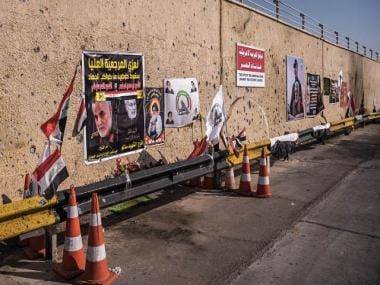#Major explosion at missile facility in Iran gives rise to variety of conspiracy theories al
Explore tagged Tumblr posts
Text
Major explosion at missile facility in Iran gives rise to variety of conspiracy theories all over Tehran

Iran’s news media tried to counter reports about the missile site, saying those were generated by “enemy media” eager to portray Iran’s missile bases as vulnerable to attack
When a major explosion lit the skies on the edge of Tehran last week, the Iranian government was quick to dismiss the episode as a gas explosion at the Parchin military base, which was once the focus of international nuclear inspectors.
It turned out that was false: Satellite photographs show the explosion happened at a missile production facility not far from Parchin, a base laced with underground tunnels and long suspected to be a major site for Iran’s growing arsenal.
But beyond Tehran’s effort at misdirection — commercial satellite photographs showed the telltale burn marks of the explosion and the location — it is unclear whether the cause was an accident, sabotage or something else.
US and Israeli intelligence officials insist they had nothing to do with it.
But in Iran, where curating conspiracy theories is a national pastime, the sight of a huge explosion in eastern Tehran quickly merged on social media with news of a power outage in Shiraz, nearly 600 miles to the south. Shiraz also has major military facilities, and the explosion and the outage happened within the same hour on Friday.
There is no evidence the incidents were related.
Nuclear inspectors visited the Parchin military facility five years ago after years of standoffs with Iranian authorities. Renovations at the facility had been so extensive that it led to suspicions that the government might have been trying to hide past work on nuclear detonation technologies.
After the episode last week, Iranian news organisations were shown a small hole in an otherwise intact gas tank, which seemed an improbable explanation for an explosion so large that pictures of the flames, taken miles from the site, showed up on Twitter.
By the end of the weekend, overhead commercial photographs showed a scorched hillside at the Khojir missile production complex in eastern Tehran, where both liquid and solid propellants are made for Iran’s missile fleets.
“It seems likely that some sort of gas or liquid storage tank blew up,” said Fabian Hinz, an expert on Iran’s military at the James Martin Centre for Nonproliferation Studies at the Middlebury Institute of International Studies in Monterey, California. “Probably industrial gas that’s needed for missile production,” he said, but it was unclear from the photos. The main buildings at the missile production centre appeared undamaged.
Iran’s missile programme has long been a target of Israeli intelligence agencies. A large explosion in 2011, which killed a key architect of Iran’s missile programme, is widely viewed as an act of sabotage.
But this explosion may have been different. Two Israeli intelligence services that operate outside Israel’s borders, the Mossad and the Israel Defence Forces intelligence unit, said they were investigating the episode and had not yet reached a final conclusion on whether it was an accident or sabotage. But several officials insisted that Israel was not involved.
US officials also said they doubted it was a sabotage operation. Usually, Israel and the United States act in coordination in such covert missions, as they did with the cyberattack on Iran’s nuclear centrifuge facility at Natanz a decade ago.
A spokeswoman for the Israeli prime minister’s office declined to comment on whether Israel was involved in the explosion, a standard response to such questions. A spokesperson for the IDF also declined to comment.
Ronen Solomon of IntelliTimes, an intelligence blog, who was among the first to identify the Khojir missile facility as the site of the explosion, noted that it did “little damage.” But he noted it was “a vast facility,” and as part of the Shahid Hemmat Industrial Group, it has been the target of US economic sanctions.
If the explosion was an act of sabotage, some analysts noted, it was carefully designed to not invite retaliation because damage was so minimal. But in the past, there have been small attacks designed to create fear among Iranians that foreign powers had insiders in the country’s sensitive military programmes.
Iran’s news media tried to counter reports about the missile site, saying those were generated by “enemy media” eager to portray Iran’s missile bases as vulnerable to attack.
David E Sanger, Ronen Bergman and Farnaz Fassihi c.2020 The New York Times Company
Find latest and upcoming tech gadgets online on Tech2 Gadgets. Get technology news, gadgets reviews & ratings. Popular gadgets including laptop, tablet and mobile specifications, features, prices, comparison.
The post Major explosion at missile facility in Iran gives rise to variety of conspiracy theories all over Tehran appeared first on Sansaar Times.
via Blogger https://ift.tt/2Bct6sN
#Blogger#Major explosion at missile facility in Iran gives rise to variety of conspiracy theories al
0 notes